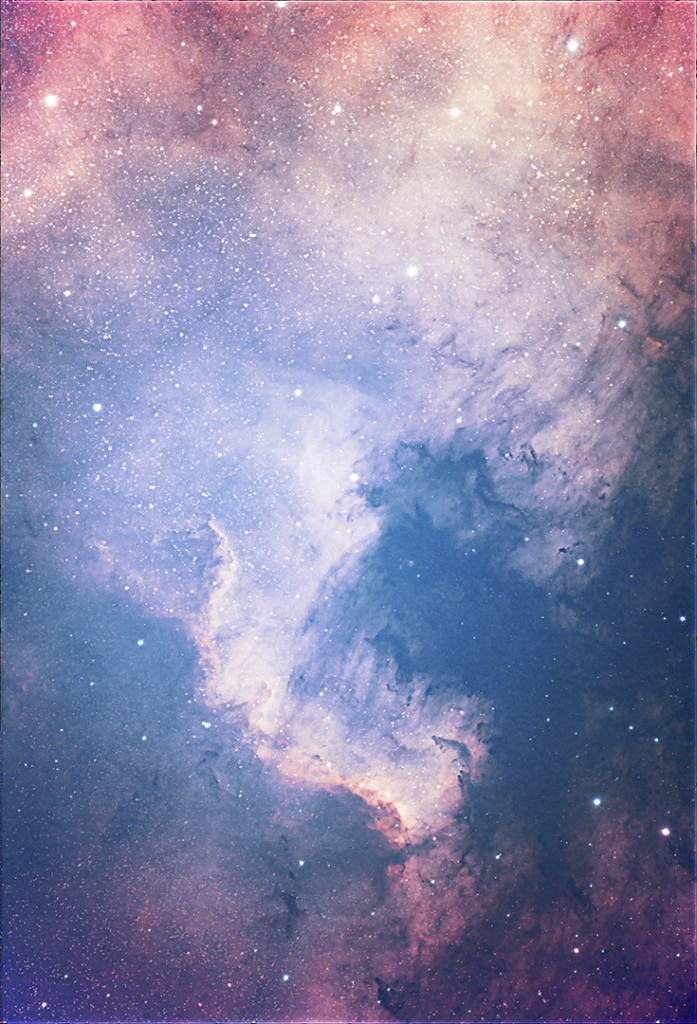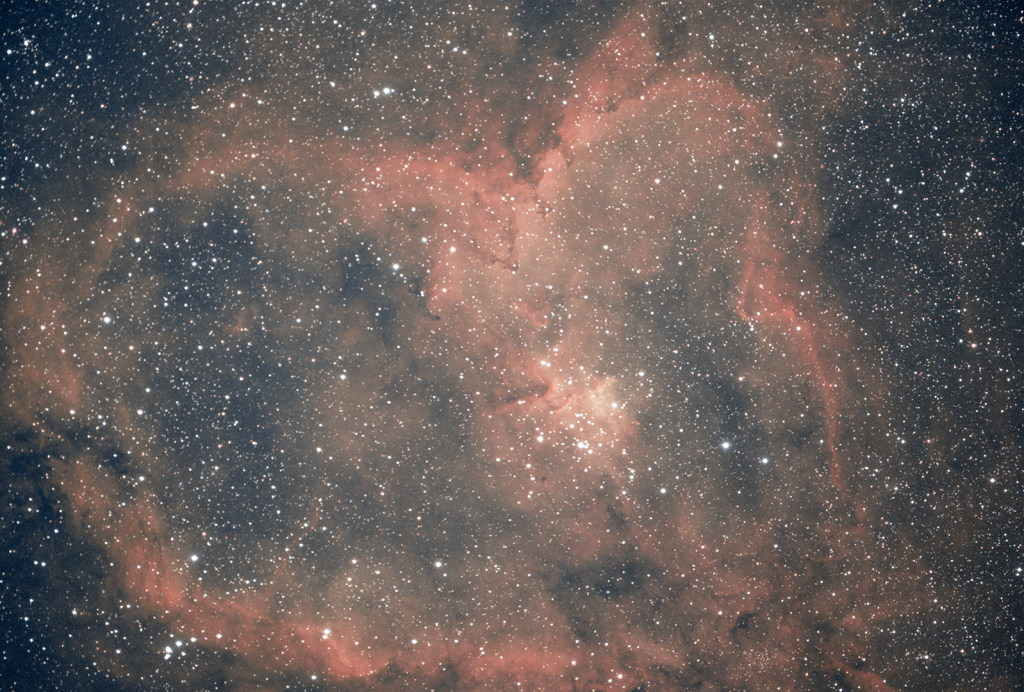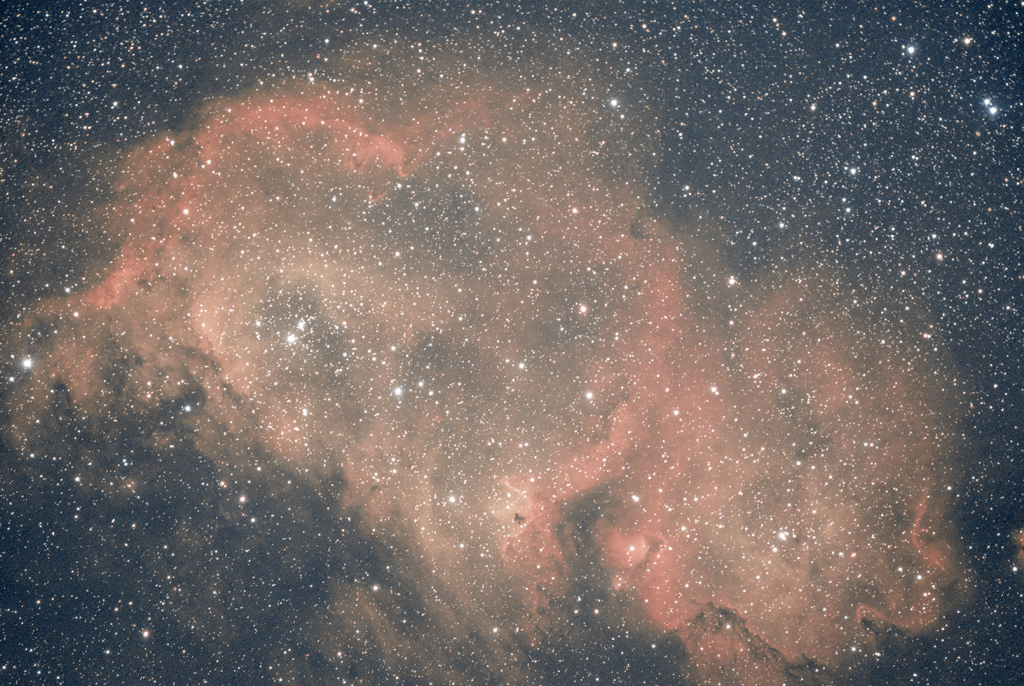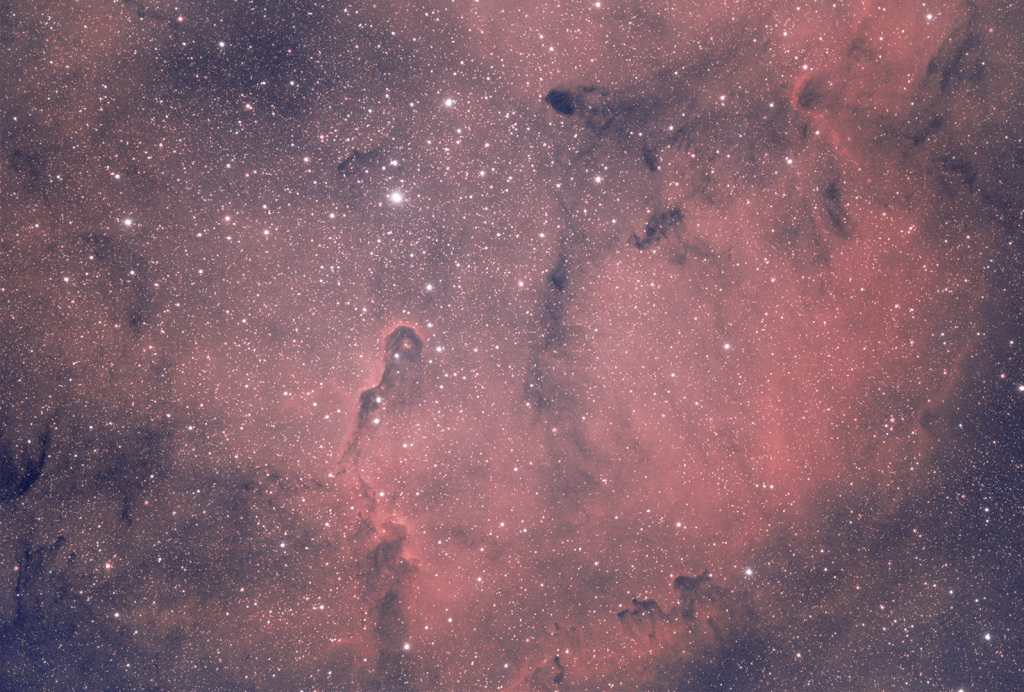I decided to spend Thanksgiving evening at the River Ridge Observatory shooting the North American Nebula (NGC 7000). I shot this nebula a few months ago but I decided to do so again to see what I’ve learned since then. The Moon was near full but I used my Optolong L-eNhance filter to restrict wavelengths to Hydrogen Alpha and Oxygen III. I used my C11 with Hyperstar, it was auto-guided and this image was made from 12 5-minute subs with flats and darks applied. All post processing was done in Photoshop. I was a little aggressive in processing to bring out the details in the center, but the reddish hue at top and bottom volunteered itself.




